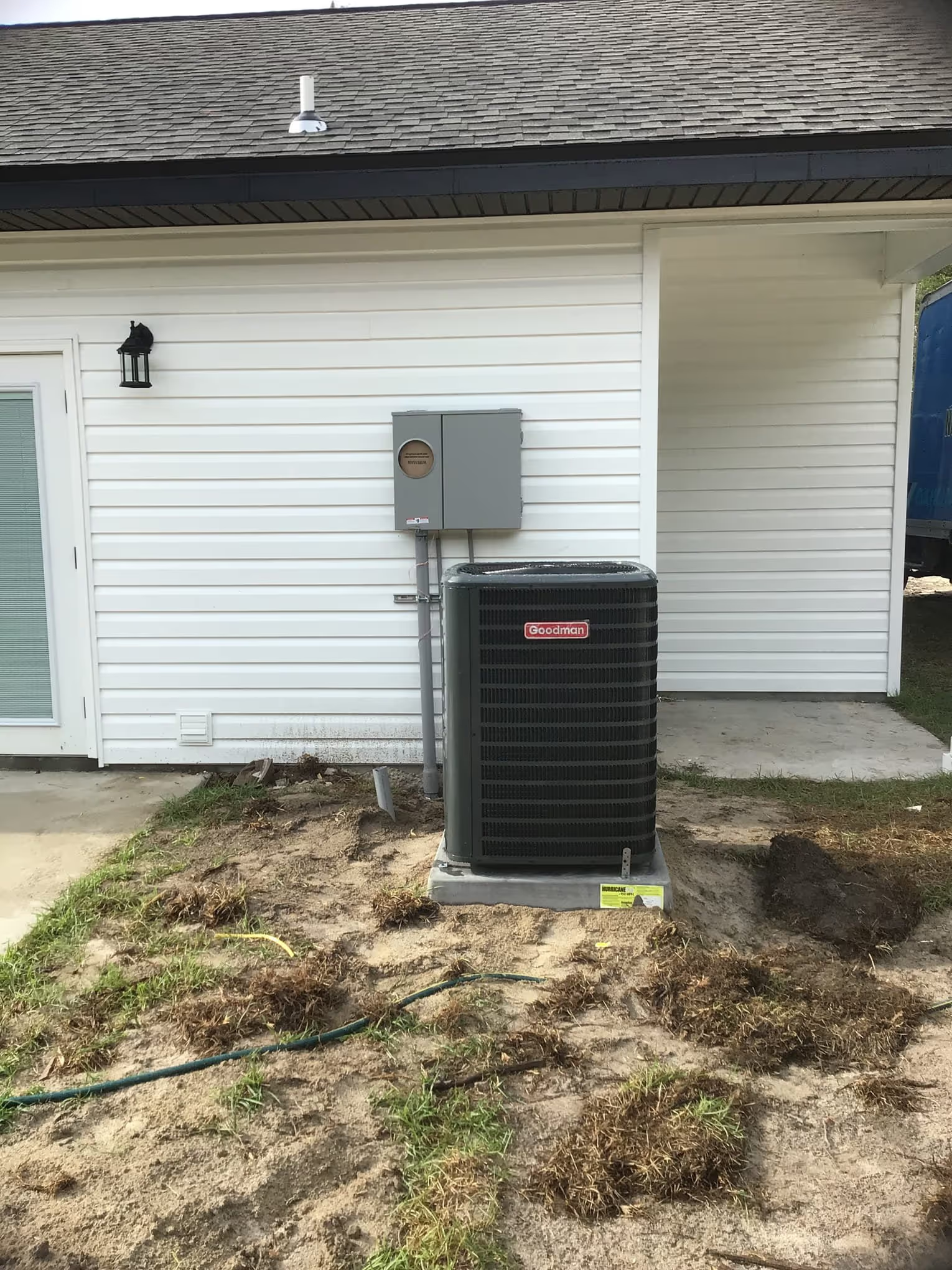


FREE Water Heater
With every whole house repipe purchase. Free brand-new water heater or credit towards a tankless water heater.
.svg)
.svg)
.svg)
.svg)



With every whole house repipe purchase. Free brand-new water heater or credit towards a tankless water heater.
.svg)
.svg)
.svg)
.svg)

The cost of an HVAC tune-up varies depending on the type and size of the system, but generally, an HVAC tune-up costs between $100 and $350, with an average around $250. This range covers basic maintenance that helps keep heating and cooling systems running efficiently and can prevent costly repairs later.
More advanced units or those with special features may require more time and parts to inspect, resulting in higher costs. Understanding these costs helps homeowners budget properly and choose quality service.
In this article, you’ll learn how much an HVAC tune-up costs in October and what’s included in a typical service visit.
Let’s break down the key points you should consider.
Keep reading! Different factors affect the final price, such as the complexity of the system and the location.
A tune-up covers key steps to keep an HVAC system running smoothly. It focuses on cleaning, adjusting parts, and checking important safety and performance features.
Technicians start by inspecting the entire HVAC system, looking for dirt, damage, or worn parts. Cleaning is done on components like blower wheels and coils to remove dust and debris that block airflow.
They calibrate system settings to ensure heating and cooling run correctly. Airflow is tested by checking the blower motor and vents to confirm air moves evenly throughout the home.
This work helps prevent unexpected breakdowns and keeps the system working efficiently, which saves energy and lowers utility bills.
The thermostat is tested to verify it reads temperatures correctly and signals the system to turn on and off at the right times. Electrical connections are checked for tightness and signs of wear to avoid faults or shorts.
Safety features such as limit switches and control boards are inspected to make sure the system operates safely. The technician confirms the HVAC unit starts reliably every time with no unusual noises or sparks.
These tests help prevent fires, system damage, and unsafe conditions in the home while improving overall performance.
Coils inside the air conditioner or heat pump are cleaned to improve heat transfer, which helps cool or heat the home faster with less energy. Compressors work harder when coils are dirty, which raises electricity use.
Drain lines are cleared to avoid clogs that cause water damage or mold growth. Filters are checked and replaced if dirty. Clean filters allow better airflow, reducing strain on the system.
According to ENERGY STAR, airflow problems—often caused by clogged filters or blocked ducts—can cut system efficiency by up to 15 percent.
Proper coil, drain, and filter maintenance lowers energy bills while extending the life of the HVAC unit by keeping it from working too hard.
The cost of an HVAC tune-up depends on many things, including the system’s size, type, and where the service is done. A basic check often covers the essential parts but might not include extra services or repairs, which add to the price.
By following a regular preventive maintenance schedule, homeowners can cut heating and cooling costs by 5 % to 10 %, according to the U.S. Department of Energy.
A typical HVAC tune-up usually costs between $70 and $200. Smaller systems or simple checks fall at the lower end of this range. Larger or more complex systems cost more because they take longer and need more parts checked.
Prices also change based on the technician’s experience and local labor rates. Seasonal demand can raise prices too—spring and summer are busier for AC tune-ups. The age of the system can influence cost since older units may need more detailed attention.
A basic HVAC tune-up often includes checking and cleaning the air filter, inspecting electrical connections, testing thermostat settings, and lubricating moving parts. This visit focuses on keeping the system running efficiently.
A premium service adds tasks like refrigerant level checks, cleaning coils, examining ductwork, and improving airflow. It may also include minor repairs or part replacements. This service costs more but helps catch issues earlier and keeps the system in better shape.
Some tune-ups include optional add-ons that increase the price. Coil cleaning is common and important because dirty coils reduce cooling efficiency. This service alone can add $50 to $100 or more.
Hard-to-reach filters may require extra labor to inspect or replace, adding to the final bill. Repairs are not usually part of a basic tune-up but can become necessary if the technician finds broken parts. Repair costs vary widely depending on the issue and materials needed.
Homeowners should ask for a clear breakdown before agreeing to add-ons or repairs, avoiding unexpected fees.
October is a smart time to book an HVAC tune-up. Costs tend to be lower because demand falls, and early fixes prevent costly repairs later. Plus, fall tune-ups prepare systems efficiently for winter, improving comfort and lowering bills.
In October, HVAC companies experience a slowdown after busy summer repairs. This off-season period means fewer appointments, so customers often pay less than in peak months. Technicians face less pressure and can offer faster service without rushing.
Lower demand also helps avoid long wait times. Scheduling a tune-up now ensures the system is ready before heating season starts. Many companies offer discounted rates or promotions this month to encourage early maintenance.
Choosing October for annual maintenance can be budget-friendly. It balances timely care with reduced service costs, making it a practical choice for homeowners wanting quality service without extra fees.
Minor HVAC problems that go unnoticed in the fall can escalate quickly during winter. Repair costs surge when demand spikes, especially when systems fail in cold weather. Addressing small issues during a fall tune-up avoids paying premium rates later.
Routine inspections identify worn parts, leaks, or control problems early. Fixing these keeps the system running efficiently and prevents emergency service calls. These emergency fixes often come with higher charges and longer wait times.
Investing in October maintenance protects against unexpected breakdowns and costly peak-season repairs. It also reduces the risk of discomfort or safety hazards caused by faulty heating equipment in winter.
A thorough October tune-up ensures all heating components work correctly before cold temperatures arrive. Clean filters, checked heat exchangers, and calibrated thermostats improve performance and indoor comfort.
Efficient systems use less energy, which lowers utility bills during the heating season. A well-maintained HVAC system also runs more quietly and reliably, avoiding sudden shutdowns when warmth is crucial.
By maintaining equipment in the fall, homeowners improve air quality and reduce dust or allergens inside their homes. This prep work provides steady heat and saves money, making the October tune-up a practical part of annual maintenance.
Regular maintenance keeps an HVAC system working well and prevents costly repairs. Scheduling tune-ups at the right times and knowing what to expect during service help maintain efficiency. Recognizing early signs of trouble can avoid emergency repairs and extend the life of the system.
The best schedule for servicing an HVAC system is twice a year, in spring and fall. The spring tune-up focuses on the AC unit before summer heat, while the fall service prepares the heating system for colder weather.
A simple calendar to follow:
This timing allows technicians to catch issues before heavy use seasons. It helps the system run efficiently and lowers energy bills. Skipping service can lead to breakdowns during peak weather conditions.
Each HVAC tune-up involves a detailed inspection and cleaning. Technicians check key parts like filters, coils, and refrigerant levels. They also test electrical connections and thermostat settings to ensure the system is safe and working correctly.
A typical tune-up covers:
This maintenance reduces wear and prevents unexpected failures. Keeping the system clean improves air quality and overall performance.
Some problems mean a system needs service before the next scheduled tune-up. Watch for strange noises like rattling or grinding, which could signal worn parts. Unusual odors might indicate mold or burned wiring inside the unit.
Uneven temperatures in rooms suggest airflow or thermostat problems. If certain areas feel too hot or too cold, the system may need adjustment or repair.
Other signs include:
Addressing these issues early can prevent a total system breakdown and keep your home comfortable year-round.
Selecting the right HVAC service means focusing on transparent pricing and detailed work. A clear checklist and straightforward answers to warranty questions help homeowners know exactly what to expect. Providers who offer upfront pricing and proof of work make choosing a service easier and more reliable.
A good HVAC provider gives a written checklist showing every step of the tune-up. This list should include tasks like filter checks, coil cleaning, thermostat testing, and system lubrication.
The invoice should match the checklist, showing prices for each service or package. Look for clear notes on parts replaced or repaired.
This transparency helps avoid surprises and confirms the technician completed all needed work. Customers can compare services more easily when everyone uses a detailed, consistent list.
To understand costs, ask providers:
For warranties, ask:
Clear answers protect against unexpected charges. Warranty details guide whether or not to pick a cheaper service that might not cover future fixes.
Sunshine Services offers upfront pricing before starting any work. They provide a full HVAC tune-up, including inspection, cleaning, and adjustments.
Technicians prepare a photo report showing key parts before and after service. This visual proof confirms thorough work and helps customers see the condition of their system.
With clear pricing and detailed reports, Sunshine Services builds trust and helps homeowners feel confident about maintaining their HVAC system.
The cost of an HVAC tune-up varies widely based on factors like location, system size, and the level of service needed. Typical prices range from $70 to $200 for a standard tune-up. More comprehensive packages can cost up to $300 or more.
Regular tune-ups help keep HVAC systems running efficiently and can reduce expensive repairs later. Investing in maintenance often saves money compared to the high costs of replacing a system, which can reach $5,000 to $12,500 or more.
A scheduled tune-up usually takes 1 to 2 hours and includes cleaning, inspection, and minor repairs. Choosing a reputable service provider is important to get value and ensure system longevity.
Consumers should budget for these costs to maintain indoor comfort and energy efficiency. Being aware of average prices helps homeowners make informed decisions and avoid unexpected expenses.
Schedule your fall HVAC tune-up today to avoid peak-season repair costs and keep your heating system running efficiently.